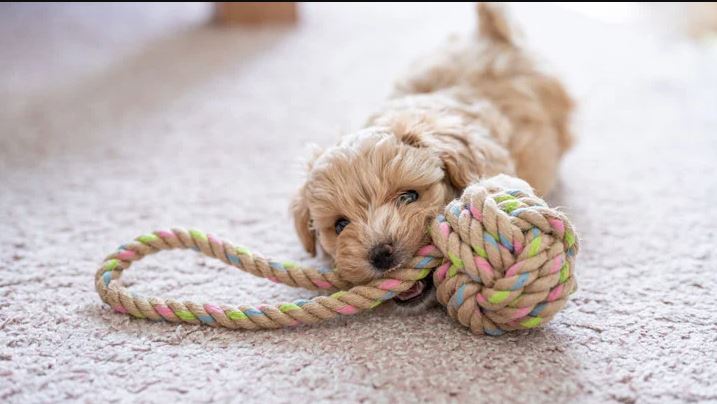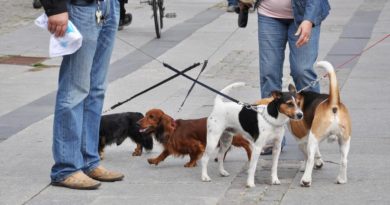How to Stop Puppy Biting?
Puppy biting is a common behavior among young dogs as they explore and learn about the world around them. While it may seem cute at first, it can become a problem if not properly addressed. Biting can cause injury to humans, damage to household items, and lead to behavioral issues down the line. “How to Stop Puppy Biting” is an important topic to consider as you raise and train your new furry friend
However, with the right training and guidance, it is possible to stop puppy biting and teach your furry friend to have more control over their mouth. Here are 10 tips for effectively curbing biting behavior in your puppy.
Understand why puppies bite
Before you can start working on stopping your puppy from biting, it’s important to understand why they do it. Puppies bite for a variety of reasons, including:
- Teething: Just like human babies, puppies go through a teething phase where they feel an urge to chew on things. This helps relieve the pain and discomfort of new teeth coming in.
- Play: Biting is a natural way for puppies to play with each other and with humans. It’s important to distinguish between play biting and aggressive biting, as the latter is more serious and requires a different approach to training.
- Exploration: Puppies are curious creatures and will often use their mouths to explore and learn about their surroundings. This can include biting and mouthing objects, as well as people.
- Communication: Puppies may also bite as a way of communicating their needs or expressing their emotions. For example, a puppy may bite if they feel threatened or are trying to get attention.
Provide appropriate chew toys
One way to redirect your puppy’s biting behavior is to provide them with appropriate chew toys. Choose toys that are specifically designed for puppies and made of durable material that can withstand their sharp teeth.
Make sure to offer a variety of toys so your puppy doesn’t get bored. You can also rotate the toys to keep things interesting. By giving your puppy something appropriate to chew on, you can help satisfy their natural desire to chew and prevent them from biting on inappropriate objects.
Redirect biting to toys
When your puppy starts biting, try redirecting their attention to a toy or chew bone. This will give them something appropriate to bite and chew on instead of your hand or clothing.
To do this effectively, you’ll need to be proactive and have toys readily available. When you see your puppy getting ready to bite, immediately offer a toy and praise them when they start chewing on it.
Use positive reinforcement
Positive reinforcement is a powerful training tool that can be used to encourage desired behavior in your puppy.
When your puppy stops biting or chooses a toy to chew on instead, be sure to reward them with praise and treats. This will help reinforce the desired behavior and make it more likely that they will repeat it in the future.
Teach bite inhibition
Bite inhibition is the ability to control the force of a bite. It’s important for puppies to learn bite inhibition so they don’t accidentally cause injury when they are playing or interacting with humans.
To teach bite inhibition, use the “yelp” method. When your puppy bites you, yelp loudly as if in pain. This will startle them and cause them to release their bite. Then, immediately stop interacting with your puppy and ignore them for a few minutes. This will teach them that biting leads to an end to the fun.
It’s important to be consistent with this method and to yelp every time your puppy bites you.
Use time-outs
In addition to the yelp method, you can also use time-outs as a way to teach bite inhibition. If your puppy continues to bite despite your efforts to redirect their behavior, it may be necessary to give them a time-out.
To do this, simply remove your puppy from the situation and place them in a separate room or crate for a short period of time (1-3 minutes). This will give them a chance to calm down and refocus.
It’s important to not use time-outs as a punishment, but rather as a way to give your puppy a break and reset their behavior.
Train the “leave it” command
The “leave it” command is a useful tool for teaching your puppy to stop biting and mouthing objects. To train this command, follow these steps:
- Start by showing your puppy a treat in your hand and saying “leave it.”
- When they try to take the treat, close your hand and repeat the command.
- When they stop trying to take the treat, reward them with a different treat and praise.
- Gradually increase the difficulty by using different objects and gradually increasing the duration of the “leave it” command.
This command can also be used to teach your puppy to stop biting people. Simply say “leave it” when they start biting and reward them when they stop.
Use physical barriers
Sometimes, physical barriers can be an effective way to stop puppy biting. For example, if your puppy is biting your hands and arms, you can wear long sleeves or gloves to protect yourself.
You can also use baby gates or crate training to create boundaries and prevent your puppy from biting. Just make sure to use these tools as a temporary measure and not as a replacement for proper training.
Seek professional help if necessary
If your puppy’s biting behavior is severe or if you’re struggling to stop the behavior on your own, it may be helpful to seek the assistance of a professional dog trainer or behaviorist. They can assess your puppy’s behavior and provide you with customized training strategies.
Be patient and consistent
Training your puppy to stop biting is a process that takes time and patience. It’s important to be consistent with your training methods and to be patient with your puppy as they learn.
Remember, puppies are still learning and developing, and it’s up to you to teach them how to behave appropriately. With the right training and guidance, you can help your puppy grow into a well-behaved and well-mannered companion.
In conclusion, puppy biting is a normal behavior that can be effectively managed with the right training and guidance. By following the tips outlined in this article, you can help your puppy learn to control their mouth and stop biting.
It’s important to be patient and consistent in your training efforts to help your puppy grow into a well-behaved and well-mannered companion. Remember, each puppy is unique and may require a customized approach to training. With time and effort, you can effectively stop your puppy from biting and create a strong bond with your furry friend.




